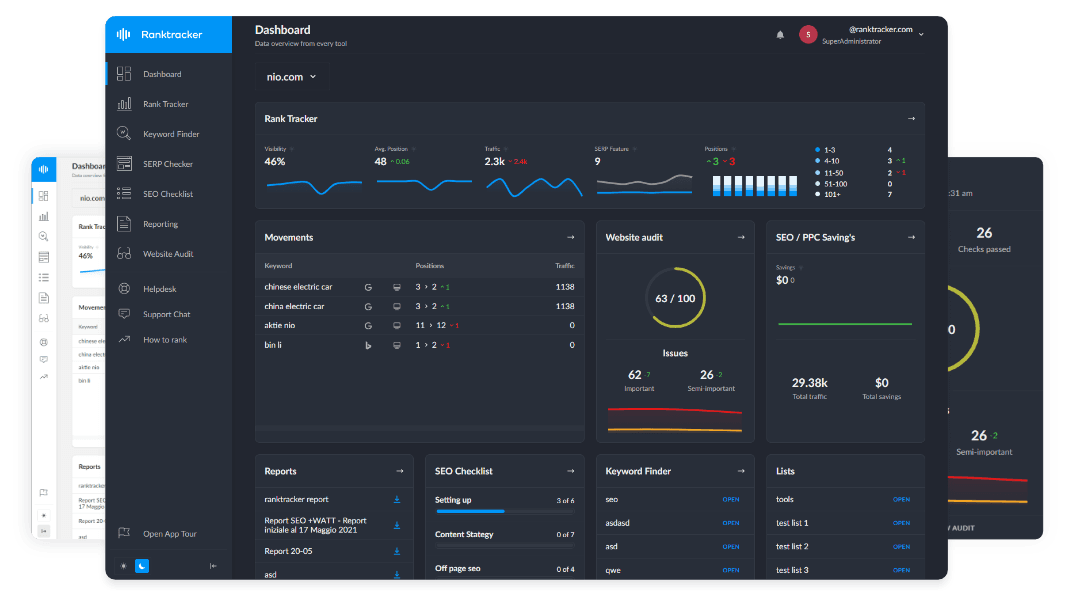Intro
Technical SEO is the foundation of a website’s ability to rank. It ensures that search engines can efficiently crawl, index, and understand your content. Unlike on-page SEO, which focuses on content and keywords, technical SEO is about optimizing site architecture, speed, and infrastructure.
1. Website Crawling & Indexing
Search engines use bots to crawl and index web pages. Ensuring your website is easily accessible is critical.
- XML Sitemaps: Keep your sitemap updated and submit it to Google Search Console.
- Robots.txt Optimization: Prevent search engines from indexing unnecessary pages.
- Canonical Tags: Use canonical tags to avoid duplicate content issues.
2. Site Speed & Performance Optimization
Page speed is a ranking factor, and a slow site can harm user experience and SEO.
- Image Compression: Use WebP or optimized JPEG/PNG formats.
- Browser Caching: Enable caching to improve load times for returning visitors.
- Minify CSS & JavaScript: Reduce unnecessary code to enhance performance.
- Use a Content Delivery Network (CDN): Distribute content across multiple servers to reduce latency.
3. Mobile-First Indexing
Google prioritizes mobile-friendly websites in its rankings. Ensure your site is responsive and optimized for mobile devices.
- Responsive Design: Use a mobile-friendly layout that adapts to different screen sizes.
- Core Web Vitals: Optimize LCP (Largest Contentful Paint), FID (First Input Delay), and CLS (Cumulative Layout Shift).
- AMP (Accelerated Mobile Pages): Consider implementing AMP for faster mobile performance.
Advanced SEO Techniques
4. Structured Data & Schema Markup
Enhance search visibility with structured data to help search engines understand your content.
- Schema Types: Use JSON-LD markup for FAQs, reviews, products, and more.
- Rich Snippets: Improve CTR with star ratings, breadcrumbs, and FAQs in search results.
- Google’s Structured Data Testing Tool: Validate schema markup for proper implementation.
5. Log File Analysis for SEO
Analyzing log files helps understand how search engines crawl your site.
- Identify Crawl Budget Issues: Optimize internal linking and remove dead-end pages.
- Detect Errors: Find and fix 404 errors, redirects, and slow-loading pages.
- Analyze Bot Behavior: Ensure search engines prioritize important content.
6. International SEO & Hreflang Implementation
For global websites, implementing hreflang correctly ensures search engines display the right language version.
- Hreflang Tags: Specify language and regional targeting.
- Avoid Content Duplication: Ensure localized pages have unique content.
- Geotargeting in Google Search Console: Set a preferred country if targeting a specific audience.
7. AI & Machine Learning in SEO
Search engines are using AI to refine search results. Staying ahead requires leveraging AI in your SEO strategy.
- AI-Powered Content Optimization: Use tools like Ranktracker’s AI SEO to analyze competitors and optimize content.
- Predictive SEO Analytics: Forecast ranking opportunities with AI-driven data.
- Automated Insights: Use AI to track trends and identify ranking fluctuations.
8. E-A-T & Advanced Content Optimization
Google values Expertise, Authority, and Trustworthiness (E-A-T), especially for YMYL (Your Money Your Life) topics.
- Authoritativeness: Publish expert-driven content with credible sources.
- High-Quality Backlinks: Build links from authoritative sites.
- User Engagement: Optimize UX for higher engagement signals.
Final Thoughts
Mastering technical and advanced SEO requires a strategic approach, continuous monitoring, and adapting to search engine updates. By implementing these expert strategies, you can improve rankings, enhance user experience, and future-proof your website’s SEO performance.

